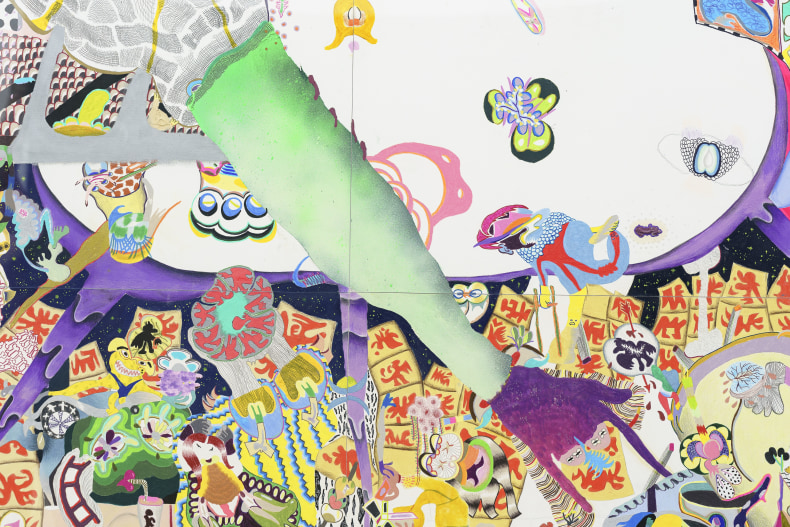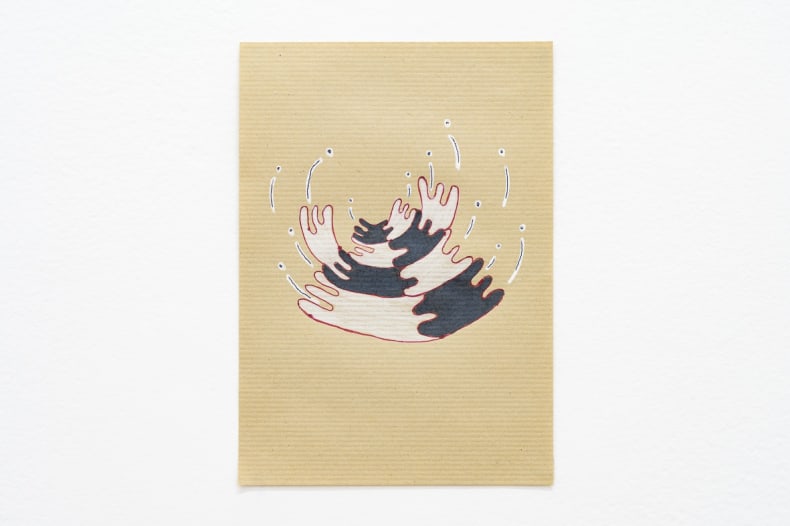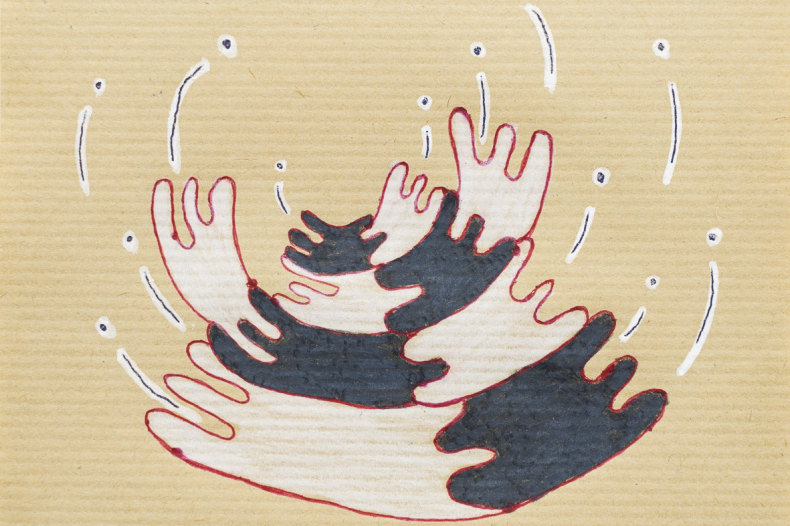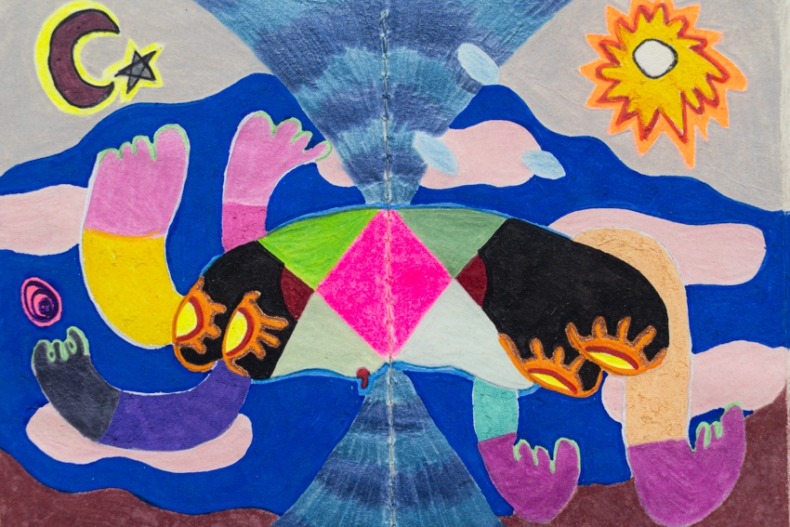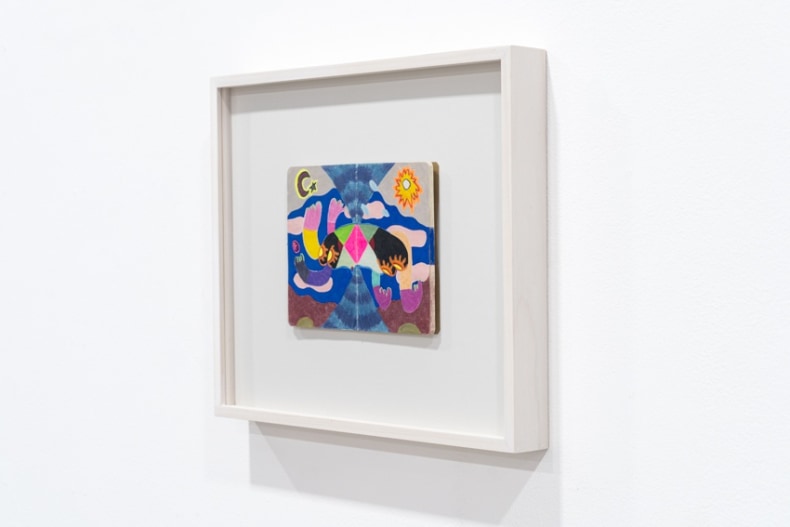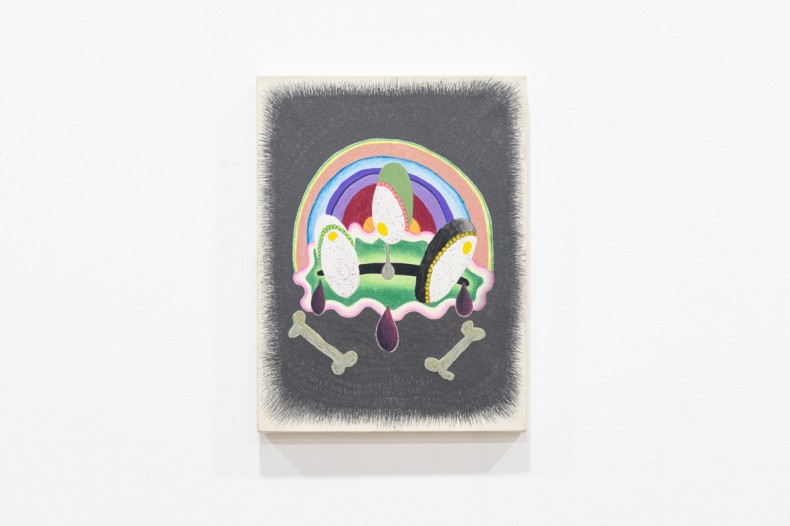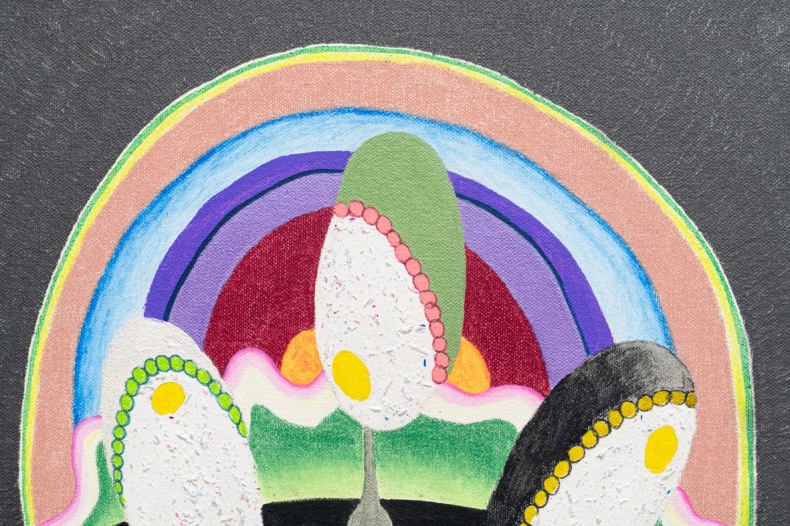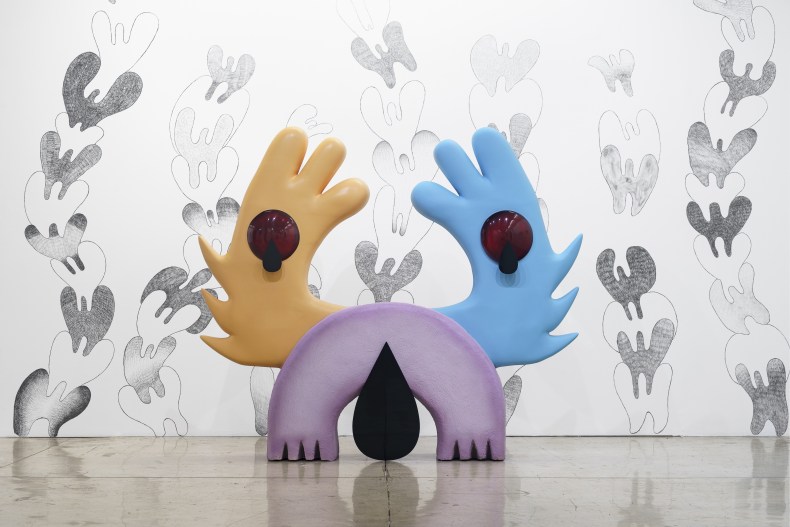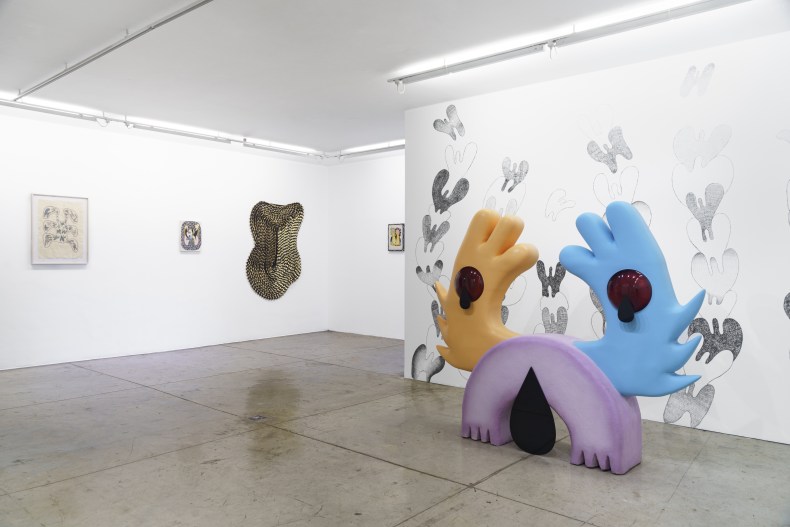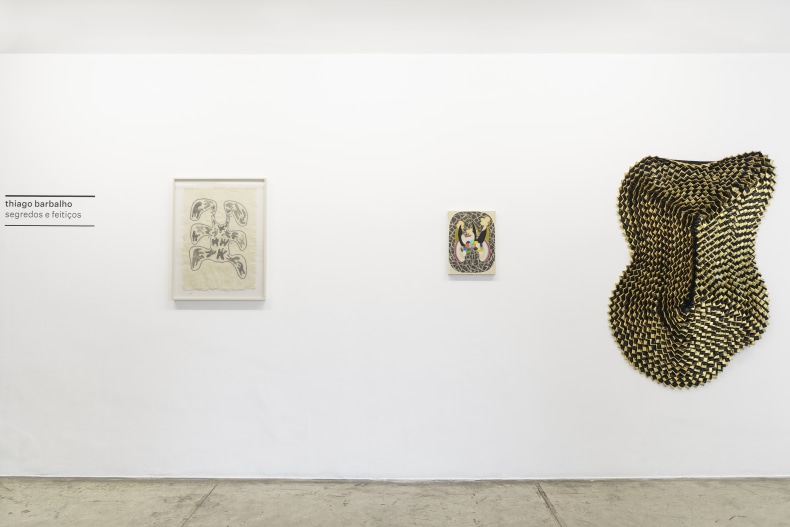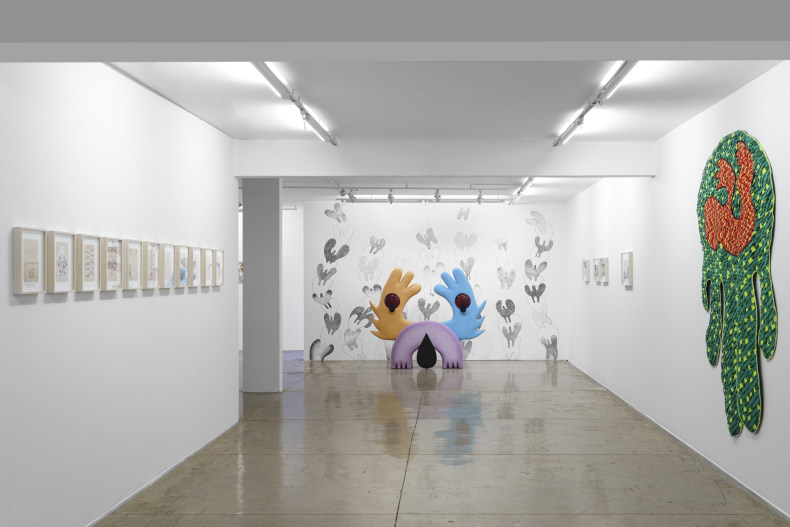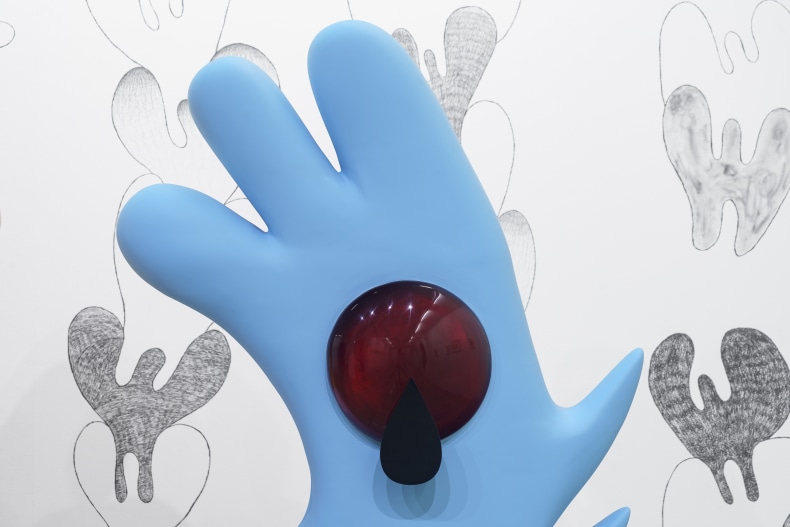Nara Roesler São Paulo is pleased to present Thiago Barbalho: Segredos e Feitiços, the artist's first solo show at the gallery's São Paulo headquarters. With drawing as the main axis of his poetic expression, Barbalho began his professional journey as a writer, and, according to him, “drawing emerged from the process of dissatisfaction with writing, from the fraying of that relationship.” Gradually, Barbalho realized that through graphic forms and signs—often created accidentally—it was possible to elaborate on the vast majority of images and visual stimuli we encounter daily. For him, the visual stimuli that surround us, of various natures, from religious symbols to advertising, provoke fascination and enchantment in those who observe them, as if they “enchant us.”
In his works, a profusion of organic, religious, and ancestral elements in vibrant colors intermingle with the abundance of details present in the compositions, where figure and background sometimes blend together. Another important aspect is the gestural quality and the different ways in which the artist manipulates colored pencils, pastels, pens, and markers, as well as acrylic and oil paints.
The exhibition brings together various formats of works, from large-scale pieces to drawings made in small notebooks. In these drawings, executed on small-format supports, the gestural element of his production becomes particularly evident, especially since this type of work often serves as a foundational element for larger-scale productions, reinforcing its experimental character.
Just as the act of drawing once broke the limits of words for Barbalho, the artist understands that working with the three-dimensionality of sculptures expands the very language of drawing as he conceives it. In different dimensions, the sculptures produced primarily with 3D printing and resin intensify the symbols already present in the artist's two-dimensional works and connect them. “They make me think of emojis and images of deities lost in a forest, Pokémon, alien cacti, offerings from civilizations—symbols that, in a WhatsApp conversation, allow us to abandon words,” he adds.
Another highlight of the exhibition is a series of works created by the artist for an exhibition held earlier this year in Jardim do Seridó, a municipality in the interior of Rio Grande do Norte, his mother's homeland. In these works, Barbalho revisits characteristic elements of the region's culture, such as rock paintings found in local caves, the semi-arid landscape, and traditional textile production techniques. Also part of this collection is the tapestry Futuro, developed for the same exhibition in collaboration with the collective Flor de Cantuta, composed of immigrant women weavers, and inspired by a type of artisanal production widely present in the region. In his words: “I wanted to gather various references, from the dams and rivers of our land to the craftsmanship of Potiguar, with its tapestries and quilts. But I wanted to avoid the clichés associated with Northeastern art in general,” he concludes.
Between July 16 and September 29, 2024, curator Catarina Duncan and the artist engaged in an email exchange as a method of investigative follow-up and dialogue around the artist’s work. The conversation navigates Barbalho’s artistic practice, the development of the exhibition, and simultaneously provides room for digressions and personal accounts amidst current events, dreams, and research references. The correspondence has been printed and will be available at the exhibition.

